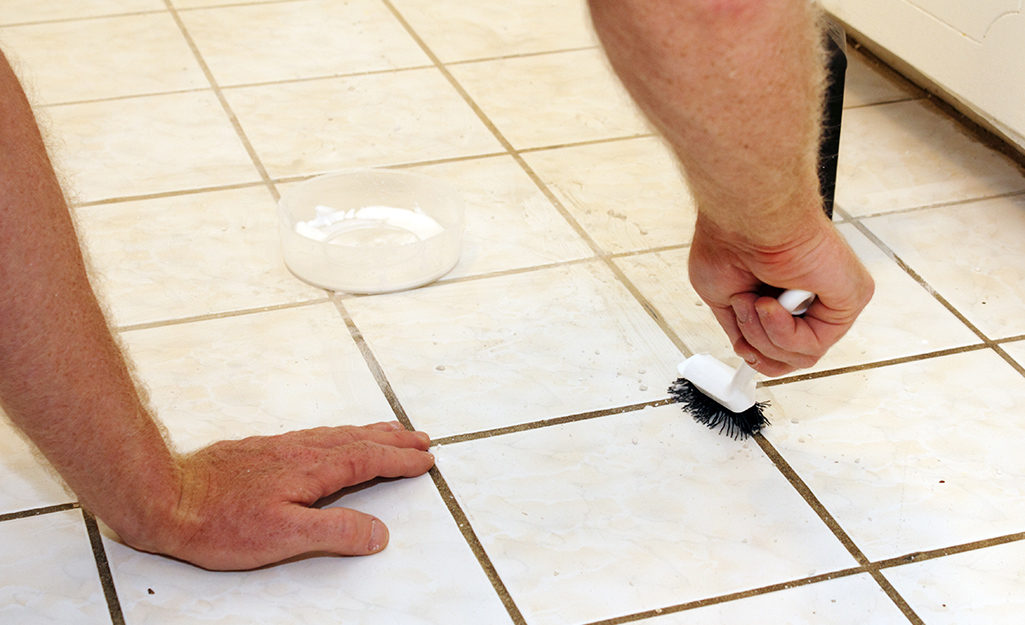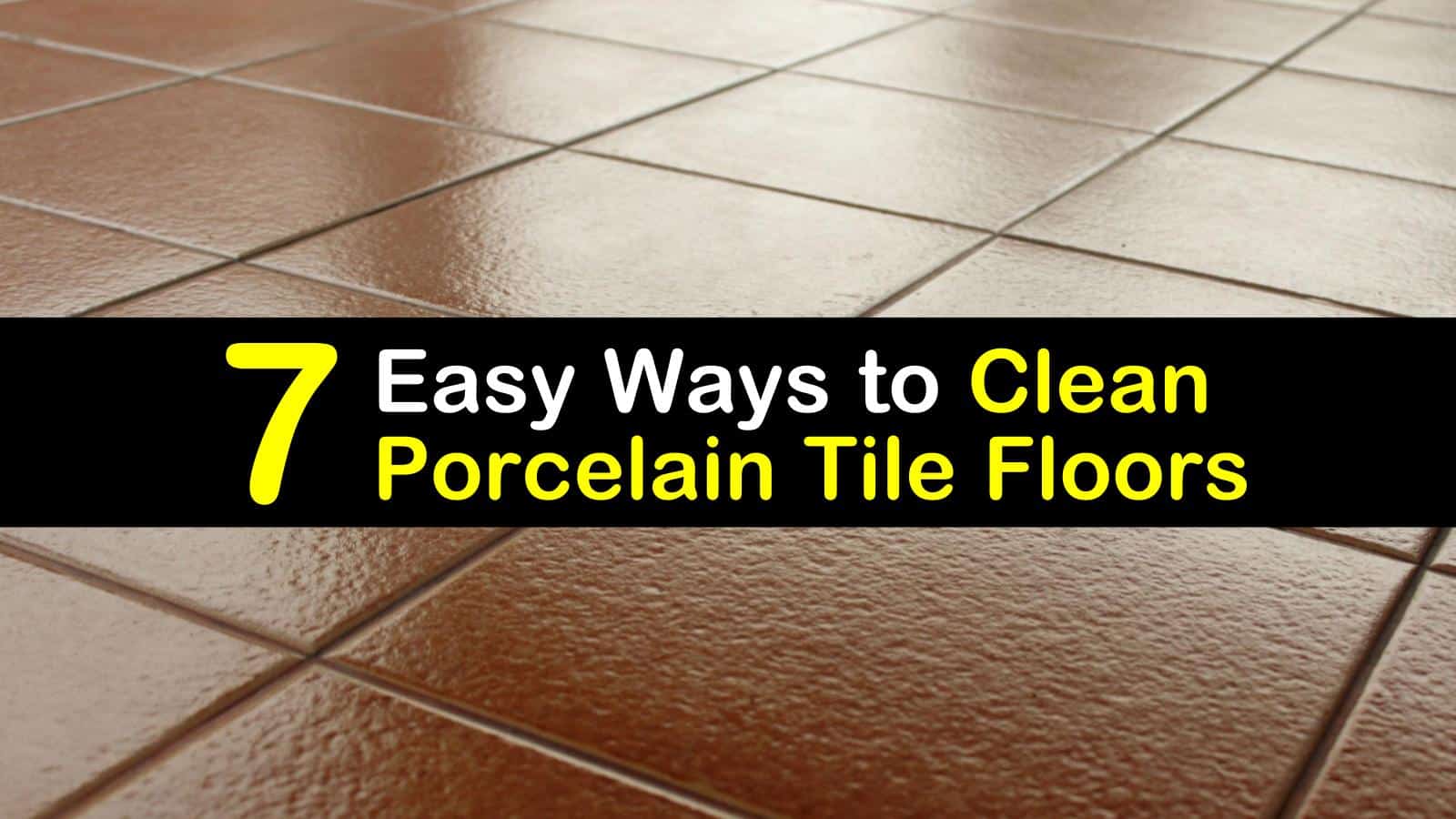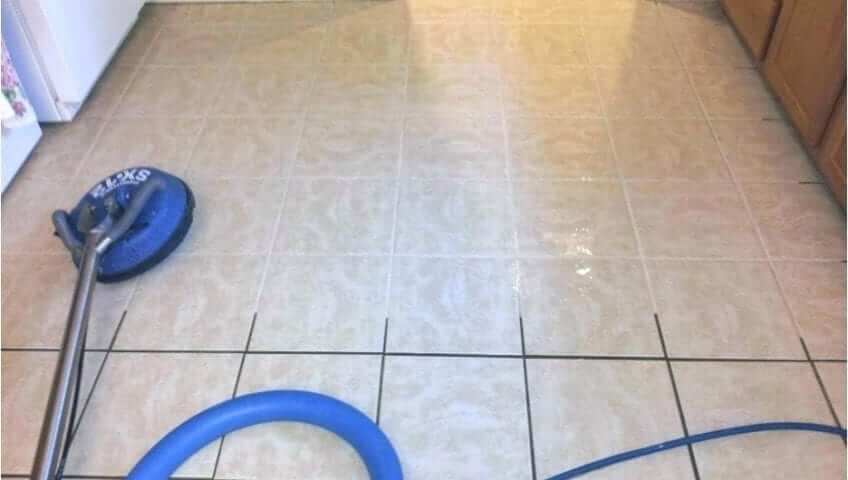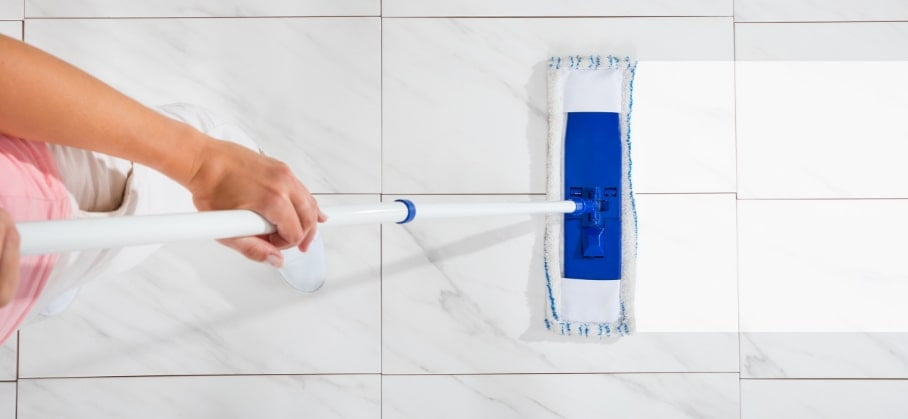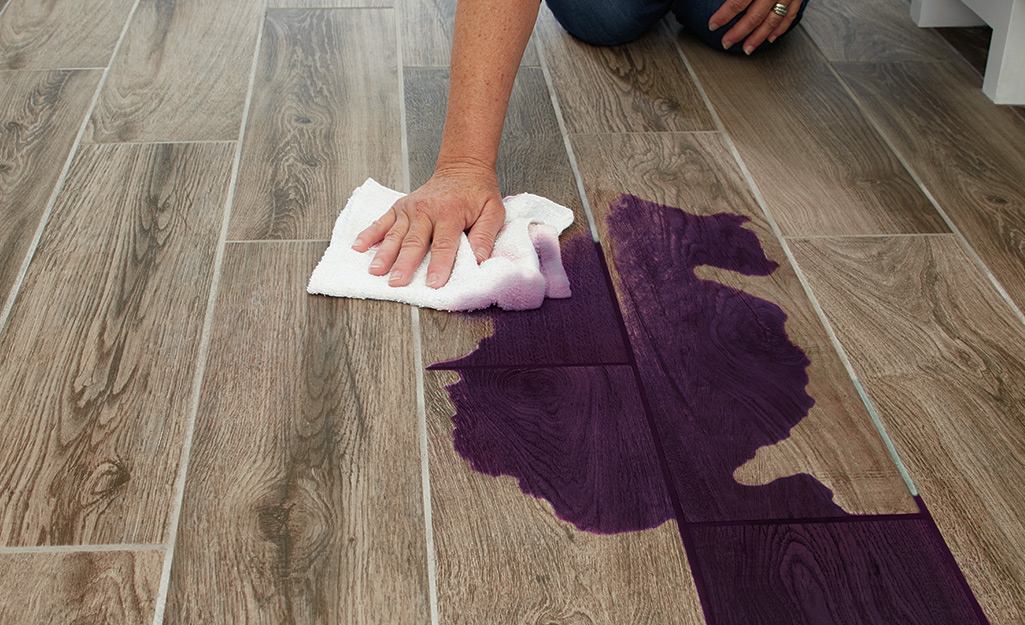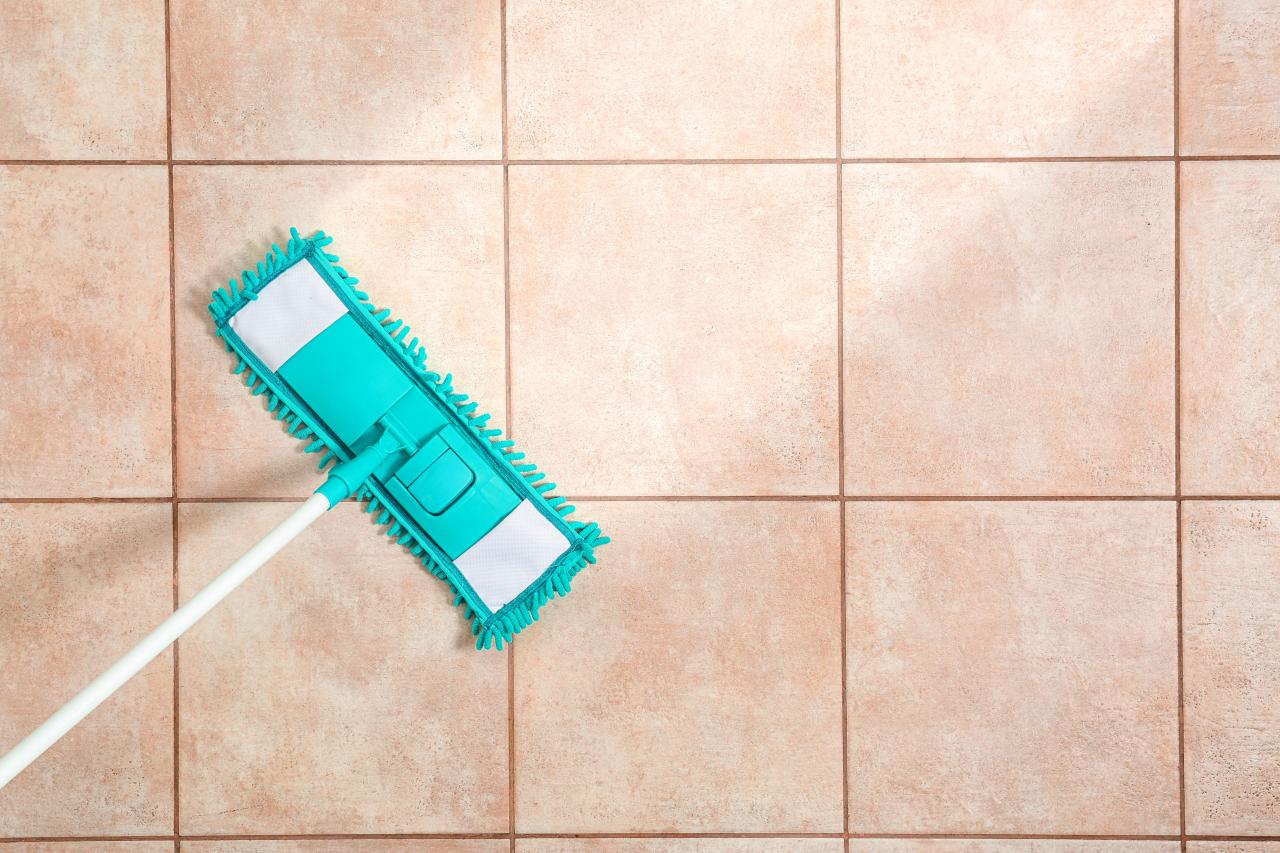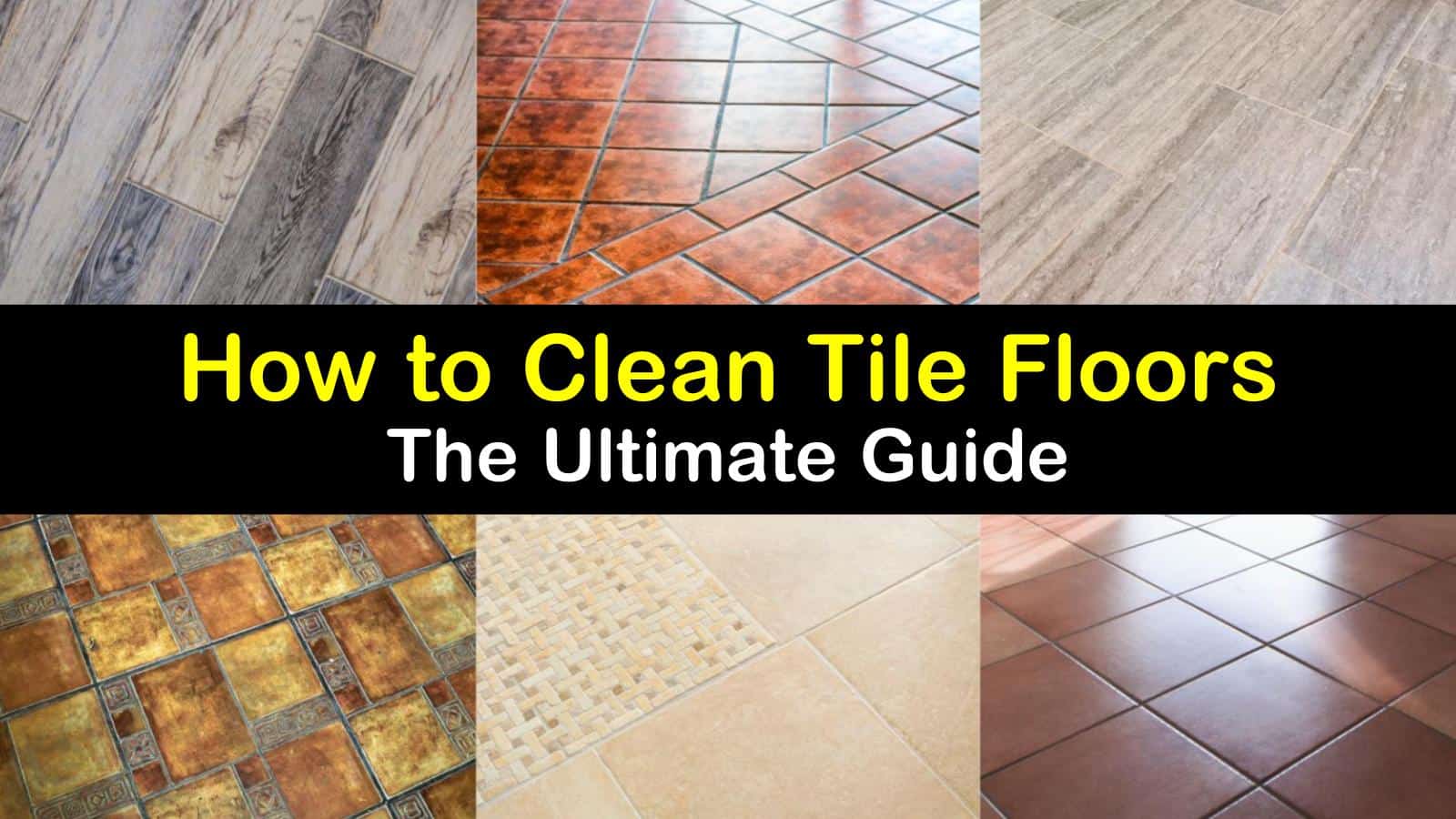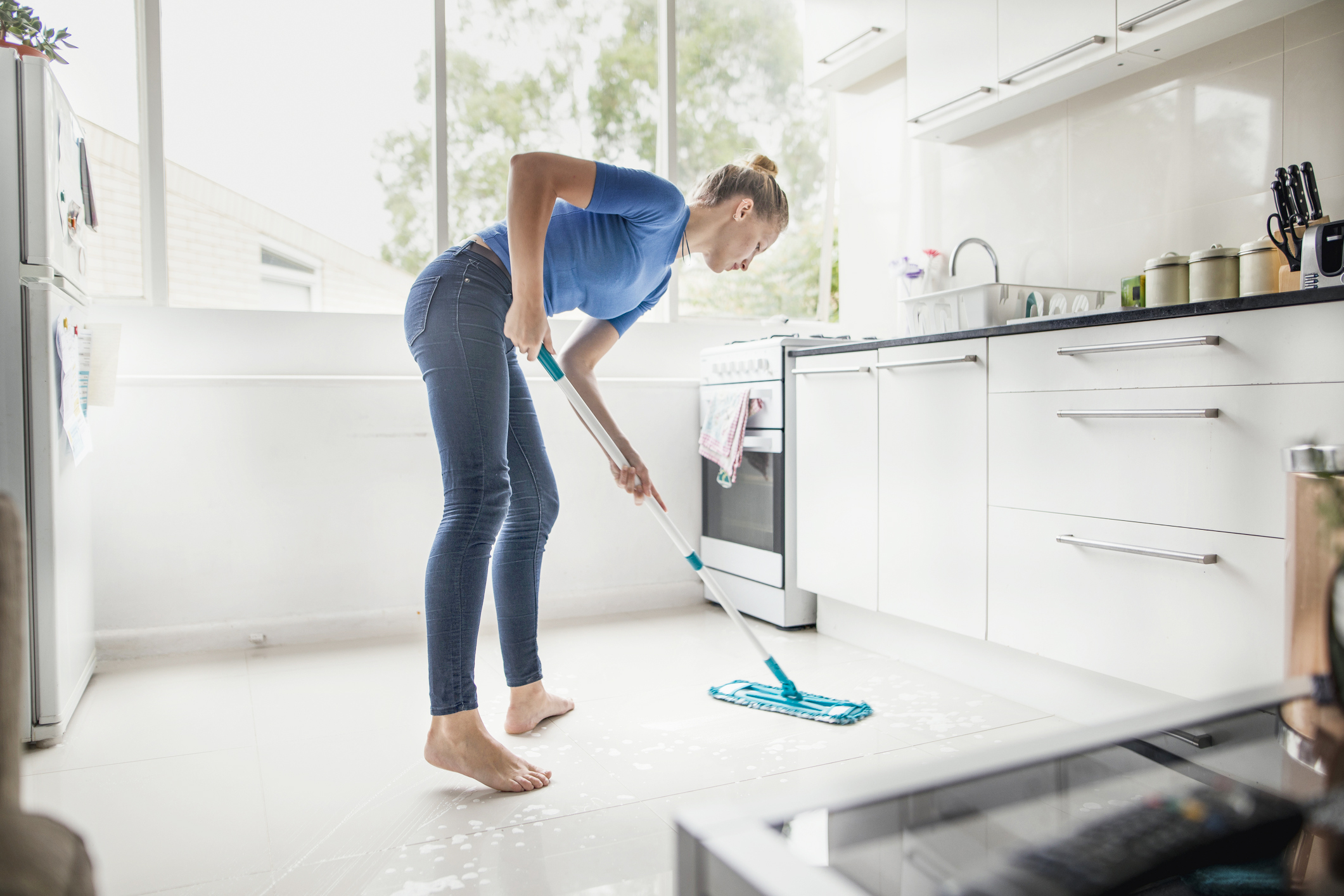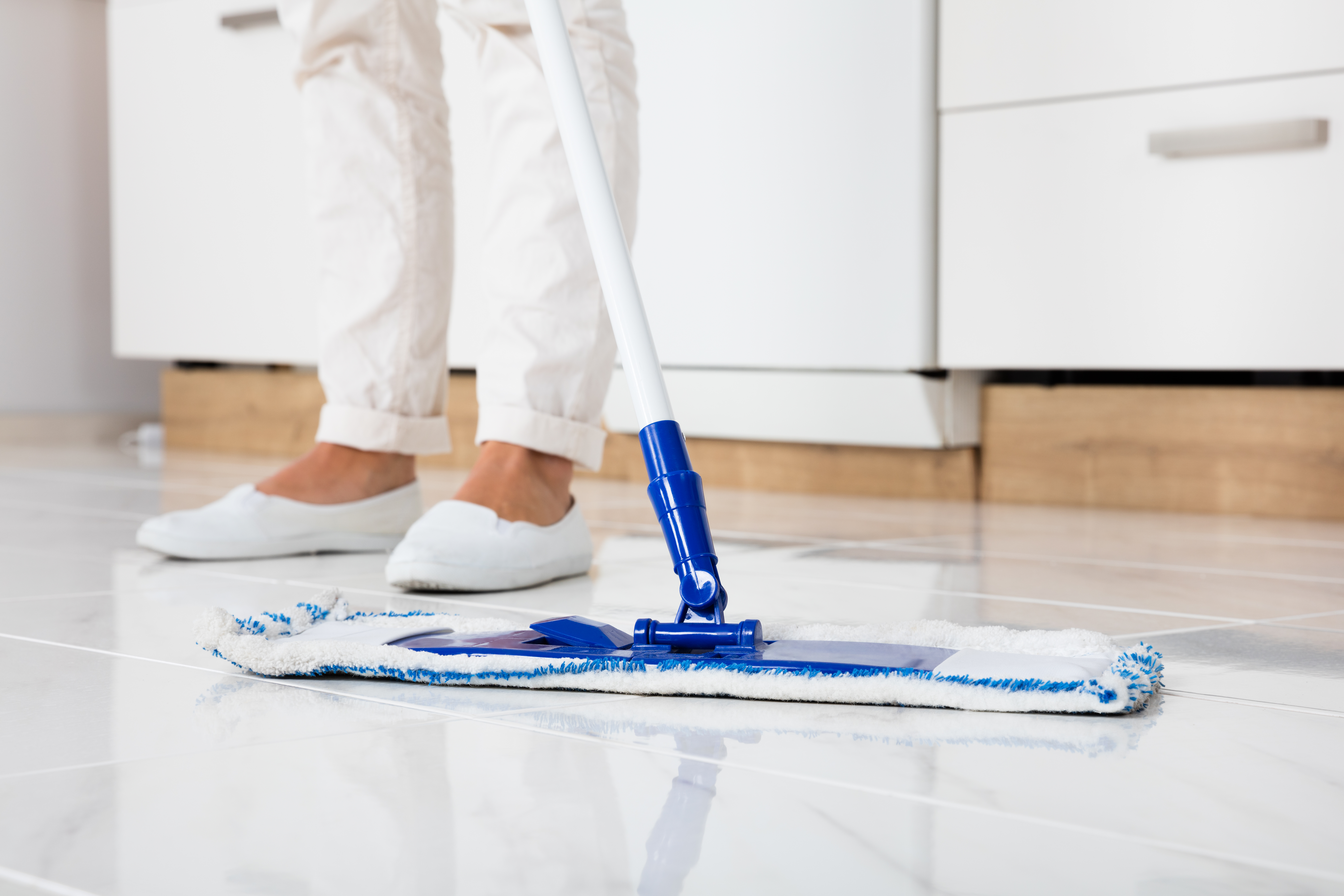Porcelain tile floors are known for their durability, aesthetic appeal, and ease of maintenance. However, like any other type of flooring, they can accumulate stains over time due to spills, dirt, and general wear and tear. Proper cleaning techniques and regular maintenance can help keep porcelain tile floors looking pristine. This article will discuss various methods to clean stained porcelain tile floors, prevent stains, and address common concerns and mistakes.
Understanding Porcelain Tiles
Types of Porcelain Tiles
Porcelain tiles come in two primary types: glazed and unglazed. Glazed tiles have a protective coating that adds color and pattern, making them less susceptible to stains and easier to clean. Unglazed tiles, on the other hand, are more porous and may require additional sealing to prevent stains. Understanding the type of porcelain tile in your home is essential to determine the most effective cleaning methods.
Glazed porcelain tiles are commonly found in residential settings due to their aesthetic versatility and stain resistance. The glazing process involves applying a liquid glass coating that is then fused to the surface of the tile at high temperatures. This coating not only enhances the tile’s appearance but also adds a layer of protection against stains and scratches.
Unglazed porcelain tiles, often used in commercial spaces, offer a natural, earthy look that is appealing for certain design aesthetics. These tiles do not have a glass coating, making them more prone to staining and requiring more careful maintenance. Unglazed tiles are usually denser and harder, providing excellent durability for high-traffic areas.
When it comes to cleaning, the distinction between glazed and unglazed tiles is crucial. Glazed tiles can usually be cleaned with mild detergents and water, while unglazed tiles may require more specialized cleaning solutions to avoid damaging their surface. Additionally, unglazed tiles might need to be sealed periodically to maintain their resistance to stains and moisture.

Common Causes of Stains
Porcelain tile floors can be stained by various substances, each requiring a specific cleaning approach. Common culprits include food spills, beverages, dirt, grease, and household chemicals. Identifying the cause of the stain is the first step in choosing the right cleaning method.
Food and beverage spills are frequent sources of stains, especially in kitchens and dining areas. Acidic substances like wine, coffee, and tomato sauce can leave noticeable marks if not promptly cleaned. Dirt and mud tracked in from outside can also lead to staining, particularly if the particles are abrasive and get ground into the tile surface.
Grease and oil stains are common in kitchens and can be particularly challenging to remove. These substances can penetrate the surface of unglazed tiles or accumulate in the grout lines, making them difficult to clean with standard methods. Household chemicals, such as cleaning agents and beauty products, can also cause discoloration if they come into prolonged contact with the tiles.
The Importance of Regular Maintenance
Regular maintenance is key to preventing stains and keeping porcelain tile floors in top condition. Sweeping or vacuuming the floor daily to remove dirt and debris can prevent scratches and buildup. Mopping with a mild detergent once a week helps maintain cleanliness and shine.
Neglecting regular maintenance can lead to the gradual accumulation of dirt and grime, which can become more challenging to clean over time. Consistent sweeping or vacuuming helps prevent abrasive particles from scratching the tile surface, which can make it more susceptible to staining. Regular mopping not only removes surface dirt but also helps to dissolve and lift any residues that could lead to discoloration.
Using a soft-bristle broom or a vacuum cleaner with a hard floor setting is recommended to avoid damaging the tiles. When mopping, it’s essential to use a clean mop and change the water frequently to prevent spreading dirt around. Adding a few drops of mild detergent to the water can enhance the cleaning power without causing harm to the tiles.
Choosing the Right Cleaning Products
Selecting the right cleaning products is crucial to avoid damaging porcelain tiles. Mild detergents, vinegar solutions, and specialized tile cleaners are generally safe for porcelain surfaces. However, it’s essential to avoid harsh chemicals like bleach and ammonia, which can etch the tile surface and cause discoloration.
When choosing a cleaning product, it’s important to consider the specific needs of your porcelain tiles. Mild detergents are often sufficient for regular cleaning, but for tougher stains, you may need a specialized tile cleaner. Vinegar solutions can be effective for removing soap scum and mineral deposits, but they should be used sparingly on unglazed tiles to avoid etching.
Avoiding harsh chemicals is critical to maintaining the integrity of your porcelain tiles. Bleach and ammonia can cause irreversible damage, particularly to glazed tiles, by stripping away the protective coating and causing the color to fade. It’s also essential to avoid abrasive cleaners, such as scouring powders or steel wool, which can scratch the surface and create areas where dirt and stains can accumulate.
Tools for Effective Cleaning
The right tools can make a significant difference in cleaning porcelain tile floors. Microfiber mops, soft cloths, and non-abrasive scrubbers are ideal for removing stains without scratching the tiles. A nylon brush can be used to clean grout lines effectively.
Microfiber mops are highly effective for cleaning porcelain tiles because they can trap and hold dirt and dust particles without scratching the surface. Soft cloths, such as microfiber towels, are ideal for wiping up spills and drying the tiles after mopping. Non-abrasive scrubbers can be used to tackle stubborn stains without damaging the tile surface.
For grout lines, a nylon brush is a useful tool. Grout is often more porous than the tiles themselves, making it more susceptible to staining. Regularly scrubbing the grout lines with a nylon brush and a suitable cleaning solution can help keep them looking clean and prevent the buildup of mold and mildew.
Spot Cleaning Techniques
Spot cleaning is essential for addressing stains as soon as they occur. Blotting the spill with a clean cloth or paper towel immediately can prevent it from setting into the tile. For tougher stains, a baking soda paste or hydrogen peroxide solution can be applied to lift the stain without damaging the tile.
Immediate action is crucial when dealing with spills to prevent them from penetrating the tile surface and becoming permanent stains. Blotting, rather than rubbing, helps to absorb the spill without spreading it further. Using a clean cloth or paper towel ensures that no additional dirt or residues are introduced to the area.
For more persistent stains, a paste made from baking soda and water can be an effective solution. Applying the paste to the stain and letting it sit for a few minutes allows the baking soda to absorb the stain before scrubbing it away gently with a soft cloth. For particularly stubborn stains, a hydrogen peroxide solution can be used. It’s important to test any cleaning solution on a small, inconspicuous area first to ensure it doesn’t cause discoloration or damage.
Cleaning Methods for Stained Porcelain Tile Floors
Using Mild Detergents
Mild detergents are often the first line of defense against stains on porcelain tile floors. They are safe for both glazed and unglazed tiles and effective at removing most everyday stains. To use, dilute the detergent in warm water, mop the floor, and then rinse with clean water to remove any residue.
When using mild detergents, it’s important to follow the manufacturer’s instructions regarding dilution ratios. Using too much detergent can leave a soapy residue on the tiles, which can attract more dirt and lead to a dull appearance. After mopping with the detergent solution, it’s essential to rinse the floor thoroughly with clean water to remove any remaining residue.
Mild detergents are effective for general cleaning and can help maintain the tiles’ shine and cleanliness. For tougher stains, allowing the detergent solution to sit on the stain for a few minutes before scrubbing can help lift the stain more effectively. It’s important to use a soft mop or cloth to avoid scratching the tiles during cleaning.
Vinegar and Baking Soda Solutions
Vinegar and baking soda are natural cleaning agents that can be used to tackle tougher stains. For a vinegar solution, mix equal parts of water and white vinegar, apply to the stain, and scrub with a soft brush. For a baking soda paste, mix baking soda with a small amount of water, apply to the stain, let it sit, and then scrub gently.
Vinegar is a versatile cleaner that can help dissolve mineral deposits, soap scum, and other residues that can cause stains. When using a vinegar solution, it’s important to dilute it properly to avoid damaging the tile surface. Applying the solution to the stain and scrubbing with a soft brush can help to lift the stain without causing harm.
Baking soda is a mild abrasive that can be used to tackle more stubborn stains. Mixing baking soda with water to form a paste and applying it to the stain allows the baking soda to absorb and lift the stain. After letting the paste sit for a few minutes, scrubbing gently with a soft cloth or brush can help to remove the stain. It’s important to rinse the area thoroughly with clean water to remove any remaining baking soda residue.
Commercial Tile Cleaners
Commercial tile cleaners are formulated specifically for porcelain tiles and can be highly effective at removing tough stains. It’s important to choose a cleaner that is suitable for your type of tile and follow the manufacturer’s instructions carefully. Test the cleaner on a small, inconspicuous area first to ensure it does not cause damage or discoloration.
When selecting a commercial tile cleaner, it’s important to consider the specific needs of your porcelain tiles. Some cleaners are designed for general cleaning, while others are formulated to tackle specific types of stains, such as grease or mildew. It’s important to read the product label carefully and choose a cleaner that is suitable for your tiles.
Using a commercial tile cleaner according to the manufacturer’s instructions is essential to ensure effective cleaning and avoid damage. Applying the cleaner to the stain and allowing it to sit for the recommended amount of time before scrubbing can help to lift the stain more effectively. Rinsing the area thoroughly with clean water after cleaning is also important to remove any remaining cleaner residue.
Steam Cleaning
Steam cleaning is an effective and eco-friendly method for deep cleaning porcelain tile floors. The high temperature of the steam can loosen dirt and stains, making them easier to remove. Steam cleaning is safe for both glazed and unglazed tiles but should be done carefully to avoid damaging the grout.
Steam cleaning is particularly effective for deep cleaning and sanitizing porcelain tile floors. The high temperature of the steam helps to loosen and dissolve dirt, grime, and stains, making them easier to remove. Steam cleaning is also effective at killing bacteria and germs, providing a thorough cleaning.
When steam cleaning, it’s important to use a steam cleaner that is suitable for hard floors and follow the manufacturer’s instructions. It’s also important to avoid using excessive steam, as this can damage the grout and cause moisture to seep into the tiles. Moving the steam cleaner slowly and evenly across the floor can help to ensure thorough cleaning without causing damage.
Hydrogen Peroxide Solutions
Hydrogen peroxide is another effective cleaning agent for removing tough stains from porcelain tile floors. It is particularly useful for organic stains, such as those from food or beverages. To use, apply a small amount of hydrogen peroxide to the stain, let it sit for a few minutes, and then scrub with a soft brush.
Hydrogen peroxide is a powerful cleaning agent that can help to remove organic stains and disinfect surfaces. When using hydrogen peroxide, it’s important to apply it carefully to avoid damaging the tile surface. Allowing the hydrogen peroxide to sit on the stain for a few minutes before scrubbing can help to lift the stain more effectively.
Using a soft brush to scrub the stain helps to avoid scratching the tile surface. After cleaning, it’s important to rinse the area thoroughly with clean water to remove any remaining hydrogen peroxide. It’s also important to test hydrogen peroxide on a small, inconspicuous area first to ensure it does not cause discoloration or damage.
Dealing with Grout Stains
Grout lines can be more challenging to clean than the tiles themselves, as they are more porous and can absorb stains more readily. Using a baking soda paste or a specialized grout cleaner and a nylon brush can help to remove stains from grout lines effectively. Sealing the grout after cleaning can help to prevent future stains.
Grout stains can be particularly stubborn due to the porous nature of grout. Using a baking soda paste is an effective method for cleaning grout lines. Applying the paste to the stained grout and scrubbing with a nylon brush can help to lift and remove the stain. For tougher stains, a specialized grout cleaner may be necessary.
After cleaning the grout, it’s important to rinse the area thoroughly with clean water to remove any remaining cleaning solution. Sealing the grout after cleaning can help to protect it from future stains and make it easier to clean. Grout sealers create a protective barrier that prevents stains from penetrating the grout, helping to maintain its appearance over time.
Preventive Measures for Maintaining Porcelain Tile Floors
Regular Sweeping and Mopping
Regular sweeping and mopping are essential for preventing dirt and stains from accumulating on porcelain tile floors. Sweeping or vacuuming the floor daily to remove dirt and debris can help prevent scratches and buildup. Mopping with a mild detergent once a week helps maintain cleanliness and shine.
Consistent sweeping or vacuuming helps to remove dirt and debris that can scratch the tile surface and cause it to become dull over time. Using a soft-bristle broom or a vacuum cleaner with a hard floor setting is recommended to avoid damaging the tiles. Regular mopping with a mild detergent helps to remove surface dirt and maintain the tiles’ shine and cleanliness.
It’s important to use a clean mop and change the water frequently when mopping to prevent spreading dirt around. Adding a few drops of mild detergent to the water can enhance the cleaning power without causing harm to the tiles. Rinsing the floor thoroughly with clean water after mopping helps to remove any remaining detergent residue.
Using Doormats and Rugs
Placing doormats and rugs in entryways and high-traffic areas can help reduce the amount of dirt and debris tracked onto porcelain tile floors. This preventive measure can minimize scratches and stains, making it easier to maintain the cleanliness and appearance of the tiles.
Doormats and rugs act as the first line of defense against dirt and debris entering the home. Placing doormats at entryways allows people to wipe their feet before stepping onto the tile floors, reducing the amount of dirt and grit that can cause scratches. Using rugs in high-traffic areas, such as hallways and kitchens, can also help to protect the tiles from wear and tear.
It’s important to choose doormats and rugs with non-slip backing to prevent them from sliding around on the tile floor. Regularly cleaning the doormats and rugs is also essential to maintain their effectiveness in trapping dirt and debris. Vacuuming or shaking out the mats and washing them periodically can help to keep them clean and functional.
Immediate Spill Cleanup
Cleaning up spills immediately is crucial to prevent stains from setting into porcelain tile floors. Blotting the spill with a clean cloth or paper towel and then cleaning the area with a mild detergent solution can prevent the spill from becoming a permanent stain.
Immediate action is essential when dealing with spills to prevent them from penetrating the tile surface and becoming permanent stains. Blotting the spill with a clean cloth or paper towel helps to absorb the liquid without spreading it further. Using a mild detergent solution to clean the area afterwards helps to remove any remaining residue and prevent staining.
It’s important to avoid rubbing the spill, as this can spread it and make it more difficult to clean. Instead, blotting gently helps to lift the spill without causing additional damage. Rinsing the area with clean water after cleaning helps to remove any detergent residue and maintain the cleanliness of the tiles.
Sealing Grout Lines
Sealing grout lines can help to prevent stains and make cleaning easier. Grout is more porous than porcelain tiles and can absorb stains more readily. Applying a grout sealer creates a protective barrier that prevents stains from penetrating the grout, making it easier to maintain its appearance.
Grout sealers are available in both penetrating and topical formulas. Penetrating sealers soak into the grout and provide long-lasting protection, while topical sealers create a protective layer on the surface. It’s important to choose a sealer that is suitable for your specific type of grout and follow the manufacturer’s instructions for application.
Applying a grout sealer after cleaning helps to protect the grout from future stains and makes it easier to clean. Regularly reapplying the sealer, as recommended by the manufacturer, can help to maintain its effectiveness over time. Sealing the grout lines is a preventive measure that can help to extend the life and appearance of your porcelain tile floors.
Avoiding Harsh Chemicals
Avoiding harsh chemicals, such as bleach and ammonia, is essential to prevent damage to porcelain tiles. These chemicals can etch the tile surface and cause discoloration. Using mild detergents, vinegar solutions, and specialized tile cleaners is safer and more effective for cleaning porcelain tile floors.
Harsh chemicals can cause irreversible damage to porcelain tiles by stripping away the protective coating and causing the color to fade. Using mild detergents, vinegar solutions, and specialized tile cleaners is a safer and more effective approach to cleaning. These products are formulated to clean the tiles without causing harm.
It’s important to read the labels of cleaning products carefully and choose those that are suitable for use on porcelain tiles. Avoiding abrasive cleaners, such as scouring powders or steel wool, is also important to prevent scratching the tile surface. Using soft cloths and non-abrasive scrubbers can help to clean the tiles effectively without causing damage.
Regular Inspections and Maintenance
Regular inspections and maintenance can help to identify and address issues before they become major problems. Checking for signs of wear and tear, such as cracks or loose tiles, and addressing them promptly can prevent further damage. Regular cleaning and maintenance can help to keep porcelain tile floors looking their best.
Conducting regular inspections of your porcelain tile floors allows you to identify any issues early and address them before they become more serious. Checking for signs of wear and tear, such as cracks, chips, or loose tiles, and repairing them promptly can help to prevent further damage and extend the life of your tiles.
Regular cleaning and maintenance are essential to keep your porcelain tile floors looking their best. Sweeping or vacuuming daily, mopping with a mild detergent once a week, and addressing spills and stains promptly can help to maintain the cleanliness and appearance of the tiles. Regularly sealing grout lines and avoiding harsh chemicals can also help to protect the tiles and keep them looking pristine.
Common Mistakes to Avoid
Using Harsh Chemicals
One of the most common mistakes when cleaning porcelain tile floors is using harsh chemicals like bleach and ammonia. These chemicals can cause discoloration and damage the tile surface. Always opt for mild detergents or specialized tile cleaners that are safe for porcelain tiles.
Neglecting Regular Maintenance
Neglecting regular maintenance can lead to the buildup of dirt and stains, making them more difficult to clean over time. Regular sweeping, mopping, and immediate spill cleanup are essential to keep porcelain tile floors looking their best.
Scrubbing with Abrasive Tools
Using abrasive tools like steel wool or scouring pads can scratch the surface of porcelain tiles, making them more susceptible to staining. Always use soft cloths, microfiber mops, and non-abrasive scrubbers for cleaning.
Overusing Water
Overusing water during cleaning can cause moisture to seep into the grout and under the tiles, leading to damage and mold growth. Use a damp mop rather than a soaking wet one, and ensure the floor dries quickly after cleaning.
Ignoring Grout Lines
Ignoring grout lines can lead to the buildup of dirt and stains, making them more difficult to clean. Regularly cleaning and sealing grout lines can help to prevent stains and maintain the overall appearance of your tile floors.
Not Testing Cleaning Solutions
Not testing cleaning solutions on a small, inconspicuous area first can result in damage or discoloration of the tiles. Always test new cleaning products on a small area before applying them to the entire floor.
How often should I clean my porcelain tile floors?
Porcelain tile floors should be swept or vacuumed daily to remove dirt and debris. Mopping with a mild detergent once a week is recommended for regular maintenance. Immediate spill cleanup is also essential to prevent stains from setting into the tiles.
Can I use vinegar to clean porcelain tile floors?
Yes, vinegar can be used to clean porcelain tile floors, but it should be diluted with water to avoid damaging the tiles. Mix equal parts of water and white vinegar, apply to the stain, and scrub with a soft brush. Rinse the area thoroughly with clean water after cleaning.
How do I remove tough stains from porcelain tile floors?
For tough stains, a baking soda paste or hydrogen peroxide solution can be effective. Apply the paste or solution to the stain, let it sit for a few minutes, and then scrub with a soft brush. Rinse the area thoroughly with clean water after cleaning.
Can I use a steam cleaner on porcelain tile floors?
Yes, steam cleaning is a safe and effective method for deep cleaning porcelain tile floors. The high temperature of the steam can loosen dirt and stains, making them easier to remove. However, it’s important to avoid using excessive steam, as this can damage the grout and cause moisture to seep into the tiles.
How do I prevent stains on porcelain tile floors?
Preventing stains on porcelain tile floors involves regular maintenance, such as sweeping or vacuuming daily and mopping with a mild detergent once a week. Placing doormats and rugs at entryways and high-traffic areas can help reduce dirt and debris tracked onto the floors. Immediate spill cleanup and sealing grout lines can also help to prevent stains.
What should I avoid when cleaning porcelain tile floors?
When cleaning porcelain tile floors, avoid using harsh chemicals like bleach and ammonia, as they can cause discoloration and damage the tile surface. Also, avoid using abrasive tools like steel wool or scouring pads, which can scratch the tiles. Overusing water during cleaning can cause moisture to seep into the grout and under the tiles, leading to damage and mold growth. Always use mild detergents, soft cloths, and non-abrasive scrubbers for cleaning.
Related Posts:
